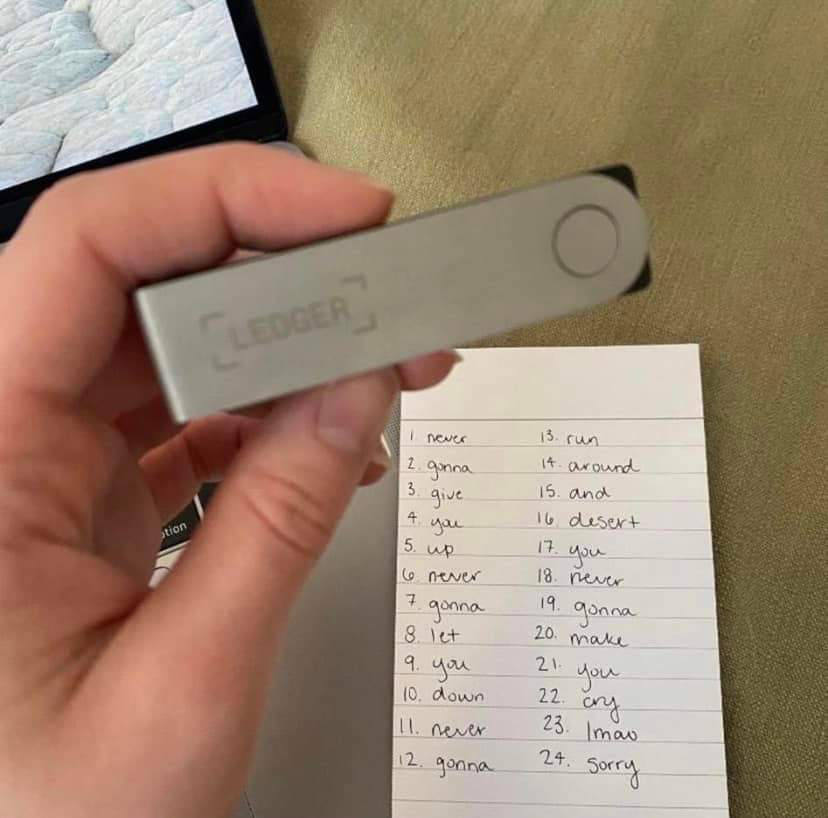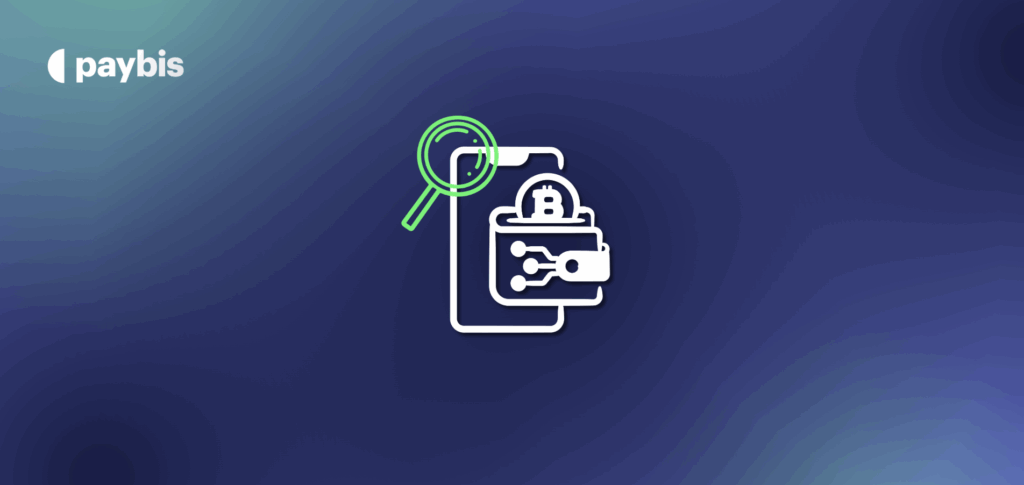Cold Storage Wallet
A cold wallet is a physical device, such as a USB stick or separate hard drive, used to securely store private keys for accessing cryptocurrencies on the blockchain.
Compromised private keys are like an oasis in the desert for crypto-criminals. Private key exploits are one of the most common ways for hackers to steal user funds, resulting in the loss of millions of dollars every year.
Storing large funds on the same device you use to access new websites and apps is not a smart move because you are often unsure about their security. Opening a malicious link could expose your private key to hackers when using desktop or mobile wallets.
A cold storage wallet, also known as an offline wallet, is a secure method of storing cryptocurrencies offline, away from the vulnerabilities of the internet.
The Paybis crypto wallet is a both safe and convenient for crypto transactions. We follow strict safety protocols and all your cryptocurrency is stored with us in cold storage. Regardless of what you choose, it is always best to stay atop the best crypto wallet security practices.
In this article, we will explore what is a cold wallet, and how they work.
Table of contents
What is a Cold Wallet?
A cold wallet is a physical device, such as a USB stick or separate hard drive, used to securely store private keys for accessing cryptocurrencies on the blockchain.
Being airgapped, it reduces the risk of hacking or theft, and allows individuals to have control over their digital assets.
That is what is a cold storage wallet.
By keeping the private keys offline and isolated from the internet, cold wallets effectively prevent unauthorized access and phishing attacks. They offer peace of mind, ensuring that only the rightful owner can transact with their cryptocurrency.
Cold storage wallets come in many forms – some only let you store the private keys while others allow you to make transactions.

Users can sign transactions using the private key stored in the cold wallet and then transfer the signed transaction to a connected device for broadcasting it to the network.
Now, how do cold wallets work?
How do cold wallets work?
A cold wallet, such as a hardware wallet, provides an additional layer of security for storing private keys and managing cryptocurrency assets. It works by securely generating and storing the private key offline (i.e., on the device itself), away from potential online threats.
The hardware wallet generates the private key internally and never exposes it to the connected computer or the internet. This isolation ensures that even if the computer or the online environment is compromised, the private key remains secure.
The hardware wallet uses a secure element, often a specialized chip, to perform cryptographic operations and sign transactions without exposing the private key itself.
When you want to initiate a transaction, the hardware wallet acts as a “messenger” between the offline private key and the online computer. It generates a digital signature for the transaction using the private key stored within the device, validating that you are the rightful owner of the associated cryptocurrency assets.
The signed transaction is then sent back to the computer, where it can be broadcasted to the blockchain network for verification and inclusion in the shared ledger.
Cold vs. Hot Storage for Crypto
There are two main types of wallets to store crypto:
- Hot wallets
- Cold wallets
Hot wallets, such as software wallets, are connected to the internet, providing easy access to everyday transactions. However, they are less secure and more susceptible to online attacks.
So, what is a cold wallet?
Cold wallets, including hardware and paper wallets, offer enhanced security by keeping your crypto offline. They protect against hacking attempts but carry the risk of potential loss or forgotten passphrases.
Below we compare both types of wallets cold vs. hot Storage for crypto in detail.
Cold Storage |
Hot Storage |
|
Air-gapped |
Yes | No |
Security |
More secure wallet due to being offline and not prone to online attacks from hackers. | Always a target and more susceptible to hacking and cyber threats. |
Functionality |
Offline and require extra steps, like connecting to a computer or device, for fund transfers which is time-consuming and less user-friendly. | Online connectivity provides easy and quick access to everyday transactions. |
Vulnerabilities |
Less exposure to potential security threats. | Prone to potential cyber theft and attacks. |
Transfer process |
Process involves connecting the wallet to a computer or mobile device, signing the transaction offline, and then broadcasting it to the network. Usually done through an app, like Ledger Live. | The transfer process is more straightforward and typically involves initiating the transaction directly through the wallet’s interface, which is connected to the internet. |
Cost |
Cold wallets are costly and range in price from $49 to $249, varying based on storage, speed, and supported cryptocurrencies. | Hot wallets are often free, with some fees involved like token swapping, staking commissions, etc. |
Examples |
Cold wallet examples are Hardware wallets (e.g., Ledger, Trezor) | Web wallets, mobile wallets, and desktop wallets (e,g., MetaMask, Exodus) |
Types of cold wallets
There are mainly 5 types of cold wallets:
- Paper wallets
- Hardware wallets
- Hardware security models
- Command line wallets
- MPC wallets
Paper Wallets
A paper wallet is just a piece of paper that stores your private key. The private key is usually store in the form of 12 or 24-word seed phrase written using pen/pencil, or a QR code that can be scanned for easy access.
They can be easily damaged, lost, or destroyed over time. Fire, water, or general wear and tear can make the paper wallet unreadable and result in a loss of access to your assets.
Storing private keys on paper introduces security risks. If someone gets hold of the paper wallet or a copy of it, they can steal the associated digital assets. Reusing the same public address, as paper wallets often encourage, compromises privacy and security.
Hardware Wallets
A hardware wallet is a device that stores the private keys required to access your cryptocurrency. The Ledger Nano X, for example, uses a secure chip to hold your private keys, which is isolated from external networks and is resilient to hacking or theft attempts.
Learn how do hardware wallets work here.
If the hardware wallet is lost or stolen, your funds are still protected as nobody can access your 24-word recovery seed. You can buy and then import the assets from your lost or stolen wallet using the recovery seed.
A pin code is required to access the hardware wallet, and if you enter the wrong code multiple times, the wallet is wiped clean (this differs from walle to wallet). The downside of a hardware wallet is that it is not userfriendly for frequent transactions as you’d need to connect it to another device and interact using a software like Ledger Live
Check out our blog on the best hardware wallets to buy.
Hardware security models
A Hardware Security Module (HSM) is a dedicated cryptographic device designed to safeguard and manage the lifecycle of cryptographic keys. It serves as a trust anchor by enabling safe key processing, administration, and storage in a secure setting.
Organizations that are concerned about security use HSMs to safeguard their cryptographic infrastructure and guarantee the security of transactions, identities, and applications.
HSMs provide improved security for a number of applications because they can safeguard keys and provide encryption, decryption, authentication, and digital signature services.
Command Line Wallet
Command line wallet provides advanced users with a way to manage their wallets through text based interfaces.
Users can create single signature or multi- signature wallets, delete wallets, generate addresses, create transactions, import and export data, and sign transactions with Command line tools (CLI).
With command line users can broadcast their transactions to the network, provides flexibility and control over funds.
Multi party Computation
Multi-party Cimputation (MPC) is a secure wallet solutions that uses multi party computation to manage digital assets. MPC wallets provides privacy, and remove a single point of failure connected with single private keys model by dispersing single private key into several portions across numerous devices and parties.
MPC wallets offers security for people, businesses and organizations managing digital assets without disclosing personal information and compromising system integrity.
MPC wallets can be both hot or cold.
The Paybis crypto wallet, for example, is based on the MPC model.
What is ultra-cold storage?
Ultra-cold storage refers to the practice of storing private keys or seed phrases in a highly secure and offline manner, ensuring maximum protection against hacking, theft, and other risks. Some people have adopted extraordinary methods to store cryptocurrency cold storage of their private keys or seed phrases for added security.
One such method is etching them onto corrosion-resistant metal plates, like stainless steel or titanium (like Cryptosteel) or metal backups. These durable plates can withstand fire, water, and physical damage, and are typically stored in secure locations like bank vaults or personal safes.

Another method involves splitting the private key into multiple parts using Shamir’s Secret Sharing algorithm and distributing these parts among trusted friends or family members. To access the funds, a certain number of these parts must be combined. Some individuals opt to conceal their seed phrases within ordinary items like books or paintings, or even encrypted within digital images using steganography.
People use time-locked vaults or smart contracts to secure their private keys, making them inaccessible until a specific date or set of conditions are met. Some adventurous individuals have resorted to burying their private keys in secret locations, similar to buried treasure.
Conclusion
Cold storage wallets provide a high level of security for cryptocurrency assets by keeping private keys offline, making them less vulnerable to hacking and theft. However, they come with tradeoffs, such as being more expensive and time-consuming compared to their hot wallet counterparts.
Technological advancements have introduced various types of cold wallets that enhance security and level of user-friendliness. Ultimately, the choice between a cold or hot wallet depends on an individual’s preferences and needs. For long-term storage and protection of crypto assets, cold wallets are ideal, while hot wallets offer convenience and accessibility for regular transactions.
FAQ
Can a cold wallet be hacked?
No, most cold wallets cannot be hacked as they are completely air-gapped, which means they are cut-off from any form of remote access method. Trying to brute force a cold wallet can result in data wipeout (including the private key). When you buy a cold wallet, always get one with a high EAL rating.
Why do you need a cold wallet?
A cold wallet provides a security against online threats, such as hacking, phishing, and malware, and employs robust encryption and smart card technology, making it extremely difficult for anyone to compromise your private keys and gain control over your digital assets.
How do cold wallets prevent theft?
Cold wallets can sign transactions offline and enhance security by isolating your private keys from potential online vulnerabilities. This means that even if your computer or mobile device is compromised by malware or a hacker, they won’t be able to access your private keys or manipulate your transactions.
What are the disadvantages of a cold wallet?
Cold wallets lack user-friendliness, time-consuming processes, and relatively high cost, which may limit their accessibility to common individuals seeking to secure their digital assets holdings.
Disclaimer: Don’t invest unless you’re prepared to lose all the money you invest. This is a high‑risk investment and you should not expect to be protected if something goes wrong. Take 2 mins to learn more at: https://go.payb.is/FCA-Info


